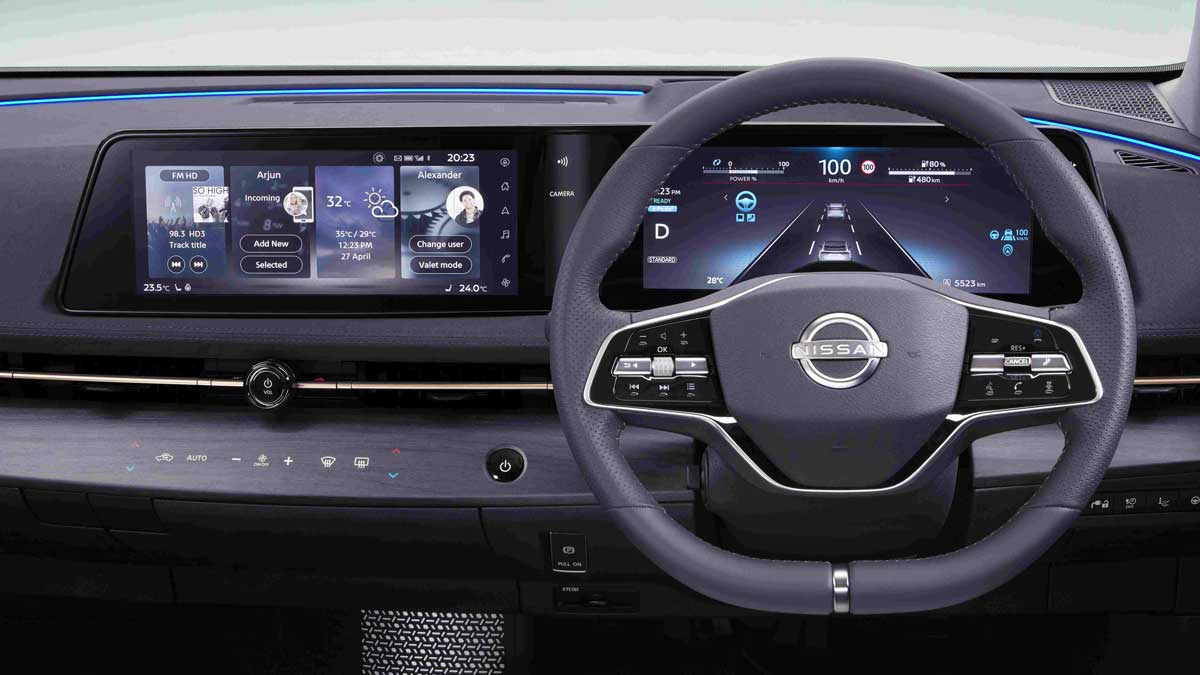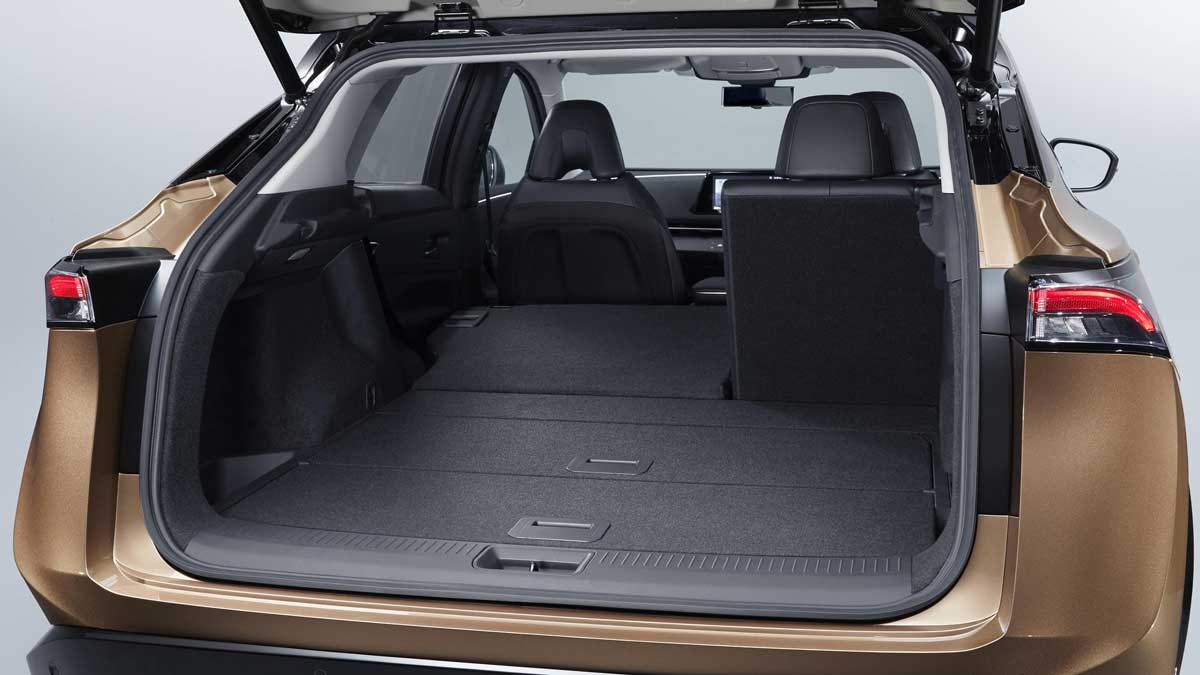Nissan has launched its Ariya electric SUV in the UK. Usually, a UK release is a harbinger of an imminent release of the model in Australia
This is because continental Europe (like most of the world) is a very large left-hand drive (LHD) auto market, so most European EV releases happen first on the continent, then spread naturally to the UK (in RHD) (despite the UK’s recent efforts to try paddling away from the continent …).
As the UK is a large, English speaking and RHD auto market, model releases there give an indication of what model specifications we will see here ahead of any ‘official’ Australian model launch.

So what do the Nissan Ariya UK offerings look like?
First-up, the Ariya can be ordered in either two-wheel drive (2WD) or all-wheel drive (AWD). The 2WD model will have two battery options (63kWh, or 87kWh) whilst the AWD versions sport only the 87kWh pack.
Speaking of ‘sport’ – the AWD version will have a performance option that lowers the 0 – 100km/hr time from 5.7 to 5.1 sec. (The 2WD version time being around 7.5 sec).

One of the more interesting aspects of the Ariya is the charging port. For Europe, Nissan are finally dropping the CHAdeMO DC charge port in favour of CCS2 – thereby falling into line with all other EVs sold there. (This is also to happen with the Ariya sold in Australia).
Whilst I have been writing about the death of CHAdeMO for some time, this is effectively ‘last nail in the coffin’ proof to the general public that the Plug War is over.
AC charging is at 7.4kW standard for the 63kWh base model and 22kW for the 87kWh models.
The WLTP range estimates do seem a bit disappointing though, given the battery sizes. Many EVs these days are more efficient than the Ariya – for example the Hyundai Kona does significantly better at almost 100km more (449km with a battery comparable in size to the 63kWh 2WD Ariya). However, there does seem to be a recent trend for EVs with poorer efficiency, but larger batteries. (More on that point in a coming article).
| Version | Range in km |
| 63kWh 2WD | 357 |
| 87kWh 2WD | 496 |
| 87kWh AWD | 456 |
| 87kWh AWD performance | 397 |
For the Australian market – another exciting development for the Ariya is that it is rated for towing. At 1.5 tonnes for the 87kWh version, it provides more than enough capacity for most day-to-day towing applications.
So what about an Australian release? That, sad to say, is likely to be an even longer wait than our usual EV one. With the UK EV market taking off at 28.1% plug-in EVs sold in November this year (18.8% BEV, 9.3% PHEV) – there is a massive demand for EVs to be met there first.
Coupled with a tiny EV sales percentage in Australia and no federal willingness to support EVs in any meaningful way, Nissan has yet to an Australian release date – and rumour has it that the Ariya is unlikely to be seen in Australia before 2023 at the earliest.
Even sadder is the fact that Japan, where it is made, is a RHD country – and a whole lot closer to us than the UK who will get it first!
So for now, we will have to be satisfied with the models we have and the ones to come in 2022 – but the Ariya is highly unlikely to be one of them.
Nissan Ariya European specifications:
| Europe-market specifications | Ariya (2WD) | Ariya (AWD – e-4ORCE) | ||
| 63kWh | 87kWh | 87kWh | 87kWh Performance | |
| Battery Capacity
*Battery capacity estimated, subject to homologation |
66 kWh
(nominal) 63 kWh (usable) |
91 kWh
(nominal) 87 kWh (usable) |
91 kWh
(nominal) 87 kWh (usable) |
91 kWh
(nominal) 87 kWh (usable) |
| Output | 160 kW / 217PS | 178 kW / 242PS | 225 kW / 306PS | 290 kW / 394PS |
| Torque | 300 Nm | 300 Nm | 600 Nm | 600 Nm |
| Acceleration (0-62mph) | 7.5 sec. | 7.6 sec. | 5.7 sec. | 5.1 sec. |
| Top speed | 99mph | 99mph | 124mph | 124mph |
| Estimated range
*Estimation based on WLTP combined cycle |
Up to 223 miles | Up to 310 miles | Up to 285 miles | Up to 248 miles |
| Towing capacity | 750kg | 1.5t | ||
| Length | 4595 mm | |||
| Width | 1850 mm | |||
| Height | 1660 mm | |||
| Weight
(depending on version and equipment) |
1.8t – 2.3t | |||
| Wheelbase | 2775 mm | |||
| Luggage Capacity | 2WD: LHD 468L, RHD 466L
4WD: LHD 415L, RHD 408L |
|||
| Charging type | CCS (For Europe) | |||
| Tire size (front and rear) |
235/55R19
255/45R20 (available as an option) |
|||
NOTE: The above specifications are as of September 2021 and are subject to homologation. Model names, features and specifications may vary by market.
UK pricing:
| Version | OTR RRP (From) | 22kW Charger | 20” Alloys | Blue – Nappa Leather Seat Fronts | BOSE Tech Pack | Sky Pack | Sport Pack |
| Advance 63kWh | £41,845
Au$77,374 |
Option | Option | Option | Option | ||
| Evolve 87kWh | £51,090
Au$94,500 |
Standard | Option (standard with Sport Pack) | Option | Standard | Standard | Option |
| e-4ORCE Evolve 87kWh | £53,790
Au$99,500 |
Standard | Option (standard with Sport Pack) | Option | Standard | Standard | Option |
| e-4ORCE Performance 87kWh | £58,440
Au$108,000 |
Standard | Standard | Standard | Standard | Standard | Standard |

Bryce Gaton is an expert on electric vehicles and contributor for The Driven and Renew Economy. He has been working in the EV sector since 2008 and is currently working as EV electrical safety trainer/supervisor for the University of Melbourne. He also provides support for the EV Transition to business, government and the public through his EV Transition consultancy EVchoice.

